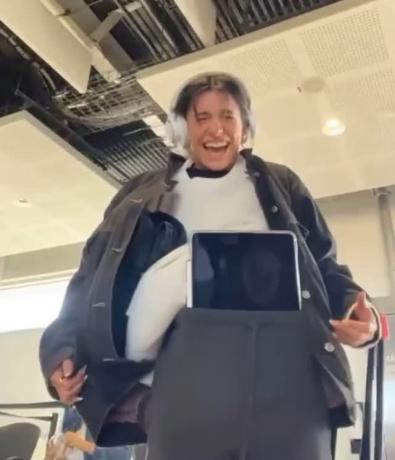Nowadays we are used to seeing, from time to time, in newspapers and magazines of great circulation, images of outer space photographed by the Hubble telescope, the most powerful astronomical observation instrument invented to date. Well, many, many models of telescopes were developed throughout modernity so that we had an observational model with as great a range as the one offered to us by Hubble. The first of the telescope models specifically created for astronomical purposes was developed by Galileo Galilei between the years 1609 and 1610. Since then, a true scientific and cosmological “revolution” began to unfold.
Galileo Galilei (1564-1642) is considered by most historians of scientific thought as the "father of modern science". This is justified by the fact that he was not only one of the pioneers in the practice of the “new science”, from the turn of the 16th to the 17th century, but also the first to elaborate theories that made possible an understanding of the functioning of the Universe that was radically different from those of Antiquity and Age Average. Galileo went beyond the scholars of
Rebirth, that, despite having corroborated the thesis that the Earth was not the center of the Universe, they could not make accurate observations and descriptions of the celestial bodies as Galileo did. With such descriptions, Galileo initially realized the moon imperfections (craters, above all), which until then was considered a celestial body without defects.These and other findings were only possible because of Galileo's use of the telescope, which he called the perspicillum. The telescope that Galileo invented was modeled on a telescope created in 1608 by the Dutch inventor Hans Lippershey from the lenses of the first glasses – until then considered common household utensils. Galileo learned the details of Lippershey's creation and, with similar tools (tubes and lenses), built a model three times more powerful than the Dutchman's. This first model was perfected by Galileo between 1609 and 1610, as the historian of science Alexandre Koyré points out:
“While the Lippersheys and the Janssen, who had discovered, by a happy chance, the combination of glasses that make up the long-range glasses, were limited to making the indispensable and somewhat unavoidable improvements (all mobile eyepieces) to his reinforced glasses, Galileo, as soon as he heard about the Dutch approach telescope, elaborated his theory. And it was from this theory, undoubtedly insufficient, but theory despite everything, that, taking ever further the precision and the power of his glasses, he built the series of “perspicilles”, which opened his eyes to the immensity of the sky.” [1]
You insights (plural of perspicillum) of Galileo revolutionized science because they made it possible to enhance the observation of the human eye. The first results of Galileo's research using the telescope were published as early as 1610 under the title "The Star Messenger". In 1613, he published the “Letter on Sunspots”, where he made explicit the first properly scientific considerations in favor of the heliocentric theory of Copernicus. Furthermore, an important point to be noted is that, with the use of the telescope by Galileo, science also came to exist intimately connected with “technique”, that is, with the ability of human beings to expand their senses through inventions, instruments and, with them, describe and intervene in nature, as he emphasizes Koyre:
“Now, by ricochet, the research of this purely theoretical aim produced results of decisive importance for the birth of modern technique, of precision technique. Because, to make optical devices it is necessary not only to improve the quality of the glasses used, but also to determine – that is, measure first and calculate later – the angles of refraction.” [2]
Thus, scientific theory became a “twin sister” of technology. This interconnection between theory and technique is still in force today and becomes increasingly present in our way of understanding the physical world, such as passage of time (through inventions such as the precision clock) or the notion of space and speed when traveling by car, train or plane.
By Me. Cláudio Fernandes
Source: Brazil School - https://brasilescola.uol.com.br/historiag/a-invencao-telescopio-por-galileu-galilei.htm

